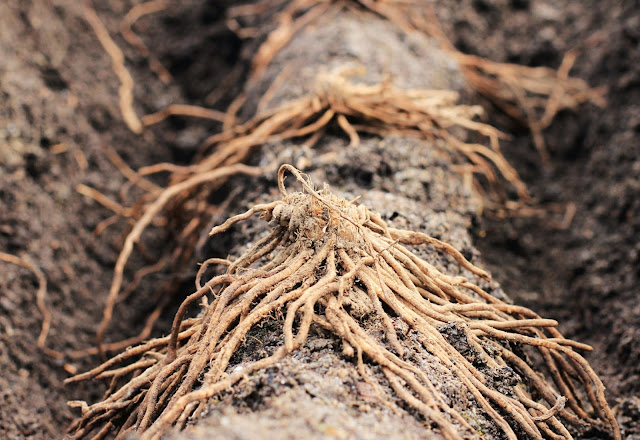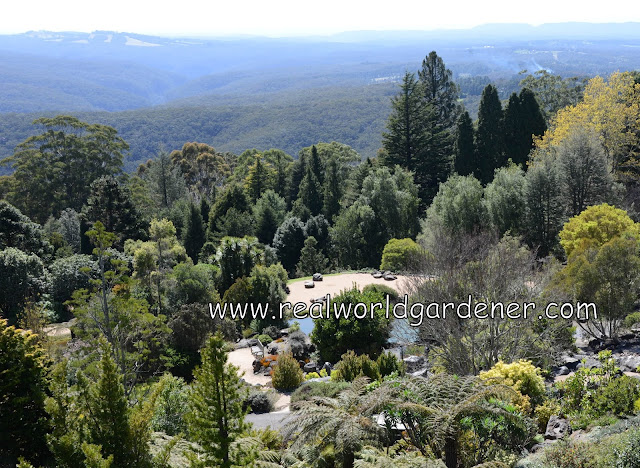PLANT DOCTOR
 Camellias have a reputation for
being hardy and thriving in neglected gardens.
Camellias have a reputation for
being hardy and thriving in neglected gardens.For the most part this reputation is unsullied, but sometimes climatic factors or an insect event can lead to a pest or disease problem with your camellia plants.
What then?
Let’s find out what can go wrong in this 2 part series on pests and diseases of Camellias.
I'm talking with Steve Falcioni, General Manager of www.ecoorganicgarden.com.au
Scale insects that most commonly attack Camellia plants are brown scale, cotton cushiony scale and white wax scale.
Control is with eco Oil or Neem and depends on the temperature and the species.
 |
| Camellia japonica photo M. Cannon |
However, for those in warm temperate and colder climates, control of scale is best done in the warmer months, from Spring onwards.
Other common pests are Camellia T-mite which is best known for the symptoms that look like a grey dusting or bronzing of the leaf. In other words loss of greenness.
Control is with the organic oil, eco Oil or Neem oil.
 |
| Mite damage on Camellias |
Most non-organic insecticides cause a blanket kill effect (non selective) on all the insects, spiders and mites wiping out both good and target bugs.
After which there’s a bit of a hiatus when there’s no bugs and then the bad bugs come back first.
Using organic sprays is the best way to control large infestations and live with minor ones, because it’ll save you money in the long run.
If you have any questions about growing fruit trees or have some information to share, drop us a line to realworldgardener@gmail.com or write in to 2RRR PO Box 644 Gladesville NSW 1675
VEGETABLE HEROES
Asparagus is a perennial plant that is native to the eastern Mediterranean and Asia Minor areas.
Vegetable names are an interesting lot and the name “asparagus” comes from the Greek language meaning “sprout” or “shoot.
Did you know that Aspargus has been around for at least 2,000 years.
Fast forward to the 16th Century, where asparagus was eaten a lot in France and England.
During that time Asparagus was known as the “Food of Kings” because King Louis XIV of France loved to eat them.
In Fact King Louis loved them so much that he ordered special greenhouses built so he could enjoy asparagus all year-round?
According to some, Asparagus is considered an Aphrodisiac, possibly because of its shape more than any other reason.
There have been asparagus recipes found in Arabian love manuals as far back as the 6th century, and experts say you need to it over three consecutive days to get the full effect. Heh Heh.
If you look in old seed catalogues that date back as far as the 19th century you’ll find that Asparagus was popular with Australians even back then.
What is Asparagus exactly?
The plant has a crown that is actually an underground stem from which asparagus spears shoots
 |
| Asparagus Bracts |
On top of these rhizomes grow spears, which are tender and succulent to eat, are slightly glossy, about 18-25cm long and 1.5-2cm wide, with many small, bumpy, triangular scales (called bracts) concentrated in the top quarter of the stem.
Some gardener might be thinking where can I buy Asparagus to grow?
In fact, do I buy seed, or tubers or what?
I’m here to tell you all that.
You can in fact buy Asparagus seed, including Purple Asparagus seed from online companies such as Green Harvest or diggers.
But now’s the time to buy something called Asparagus Crowns, and you can buy these from just about anywhere even some supermarkets.
I saw some this week in a supermarket, they were the Mary Washington variety.
You can buy the Crowns online or from mail order catalogs as well
WHEN TO PLANT
In sub-tropical districts, plant Asparagus crowns from May until July.
In temperate, arid and cool temperate zones, you have June and July to plant Asparagus crowns.
So what do you do with Asparagus really?
Asparagus is a perennial so if you haven’t a perennial veggie patch find somewhere else in the garden, maybe near those rhubarb crowns, because the crowns last for many years, and need to be left in the one spot.
Normally, your veggie patch gets a makeover every 6 months or so, -not that good for the crowns of these plants.
So find a sunny spot in the garden where you don’t mind some veggies growing there year after year.
 |
| Asparagus Crowns being planted |
To plant, dig out a shallow trench 30cm wide and 20cm deep. Incorporate well-rotted manure to the base of the trench and cover the base with a 5cm layer of excavated soil. Be sure to buy fresh crowns, as they often dry out while on display.
Place the crowns onto a small mound in the centre of the furrow, so that the roots point down at about 45°, spread the roots out carefully. Backfill with compost to a depth of 7.5 cm.
Space the plants 45cm apart, with 1.2 m between rows.
Fill in the trench gradually as growth progresses. Doesn’t sound too hard does it?
In spring Asparagus will grow long and slender with soft fernlike foliage. Don’t cut any spears in the first Spring, because this is when the crowns are developing.
Spring is also the time you need to add 100g per sq m of fertiliser like fish meal or blood and bone.
Then top with a thick hay mulch.
Asparagus produces both male and female plants shoots as male plants.
 |
| Asparagus leaves are ferny. |
During Autumn and Winter the tops will go yellow and brown off, cut off the old tops about 7.5 cm from the soil surface.
Frost damage causes distorted or dead spears, often some time afterwards if the tips are just below soil level.
Cloches or fleece can hold off light frosts.
PICKING THAT ASPARAGUS
Don’t cut any spears for the first two years after planting. In the third year, gather spears for the first month of the growing season, but in following years, if the plants are strong, cut for eight weeks.
Slice off spears with a sharp knife just below the soil before they exceed 18cm tall. In warm weather, this may mean cutting every few days.
Don’t cut any more after late December so that plants have enough time to build up their growth reserves for winter.
 |
| Green Asparagus |
In the following years, mulch the beds thickly with compost and manure in late winter.
Remember patience in the early stages will help to get a life span of 15 years or even longer for your asparagus.
Spears are harvested in two ways which gives them a different colour.
White asparagus is grown below the ground and not exposed to light.
When harvested it’s cut below the surface before being lifted out of the soil.
If spears are allowed grow in sunlight they turn a green colour.
For green, only hill about 10cm (4”) and allow the spear to grow 15cm (6”) above the soil, making sure to cut the spear just below ground level.
Asparagus is most delicious when the time between cutting and serving is kept to a minimum.
When you’re cutting the spears, do it carefully to avoid injuring the crown.
Farmers harvest by a rule-of-thumb, if the spears are thicker than a pencil cut them before the spears branch, usually at approx. 20 cm high, if they are skinnier, leave them to develop and feed the crown.
Why Is It Good For You?
Asparagus has a great flavour and is very affordable.
Asparagus is low in kilojoules, without fat or cholesterol, while providing fibre. That makes it a must for any diet, including a weight loss diet.
Asparagus contains B group vitamins thiamin, riboflavin, niacin, B6 and biotin-is a great source of folate, with a serve giving us over 20% of our daily needs.
A serve of asparagus has ¼ of your RDI of vitamin C and lastly Asparagus has potassium to help keep our blood pressure healthy.
THAT WAS YOUR VEGETABLE HERO FOR TODAY?
DESIGN ELEMENTS
Climbing Plants An Introduction-Why Use Climbers? |
| Pandorea jasminoides photo M Cannon |
 |
| Pandorea pandorana |
Allowing some greenery to cover these surfaces will give your garden another dimension.
Do you realise that you can stuff heaps of these types of plants into the smallest of gardens and have something in flower for most of the year.
So how do plants climb?
Let’s find out. I'm talking with Glenice Buck, Consulting Arborist and Landscape Designer.
Ever thought about why plants climb and where they came from?
Climbing plants originate in rainforests and started life on the forest floor.
As rainforests developed a thicker canopy there was less and less light that reached the forest floor so that plants gradually evolved ways to climb up towards the sunlight. Here’s an amazing fact, 90% of the world’s vines (climbihng plants) grow in tropical rainforests.
 |
| Pandorea jasminoides needs a strong supporting structure. |
What type of climber will be able to climb on the structure you want to use? Do I need a twiner, a scrambler, one with aerial roots or one with far reaching tendrils? The answers to these questions will be determined by the materials the structure is made out of
 PLANT OF THE WEEK
PLANT OF THE WEEK
PERSIMMONSThey’re orange and can be put into your kid’s lunchbox unpeeled, and can be eaten sliced or whole like a pear.
You can dice and freeze them, adding them to a smoothie as a thickener.
They can also be dried, changing them from a crisp consistency to a soft, date-like, chewy texture. Eaten this way, they are deliciously sweet and taste more like candy than dried fruit.
What is this tree? Let’s find out..I'm talking with horticulturalist Sabina Fielding-Smith
.
 |
| Persimmon Trees |
The small, non-edible fruit from wild persimmon trees in Japan are crushed and mixed with water. This solution is painted on paper to repel insects.
This solution is also thought to give cloth moisture-repellent properties.





















